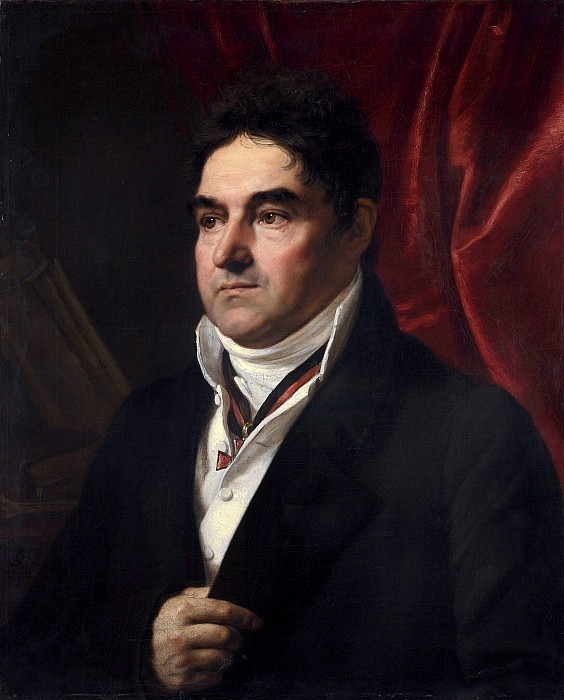Portrait of Senator Vasily Khvostov Orest Adamovich Kiprensky (1782-1836)
Orest Adamovich Kiprensky – Portrait of Senator Vasily Khvostov
Edit attribution
Download full size: 1648×2048 px (0,3 Mb)
Painter: Orest Adamovich Kiprensky
Location: The State Tretyakov Gallery, Moscow (Государственная Третьяковская галерея).
The canvas is a traditional chamber portrait characteristic of the eighteenth century. The senator and writer is shown as a private person - without awards and insignia, in plain clothes. The reading of the image lacks the drama and character tension inherent in canvases by painters of the past. A maximally dispassionate and balanced interpretation of the character’s image, a faithful composition typical of classicism, and the refined and exacting coloring confirm that the character belongs to the new era.
Description of the painting by Orest Kiprensky "Portrait of V. S. Khvostov" (1814)
The canvas is a traditional chamber portrait characteristic of the eighteenth century. The senator and writer is shown as a private person - without awards and insignia, in plain clothes. The reading of the image lacks the drama and character tension inherent in canvases by painters of the past. A maximally dispassionate and balanced interpretation of the character’s image, a faithful composition typical of classicism, and the refined and exacting coloring confirm that the character belongs to the new era. Tvostov is self-absorbed, which doesn’t amaze anyone: idealists are usually convinced individualists who consider dissociation to be a normal condition.
With the artist, the model lives on the canvas. The combination of light and shadow highlights the character’s inner world, changing right on the canvas before the eyes of the beholder. The background of the portrait is a velvet drapery of brick color, illuminated on the right side, and on the left it turns into blackness of shade, which gives the effect of infinity. The figure of Khvostov himself is immersed in the infinity of space by means of such a device. Coloring of the painting intensifies the impression. Only his face, his shirt and his arm are light spots.
The face of the hero, framed by black hair, is painted in warm corporal tones, with a blush appearing on his cheeks and slight unshavenness. The chamberiness of the portrait is emphasized by the half-length of his torso and his pectoral image. He has bent thick eyebrows above pensive, far-away light-brown eyes, tightly compressed lips, and a large elongated nose. It is no coincidence that the position of the hand holding on to the hem of the coat is painted. This important detail adds one more extra touch to the character of the hero.
Kiprensky has a tradition of painting paired portraits. And the canvas with the image of Khvostov also has a pair - the portrait of his wife.
On the canvas, the face of the hero reflects the imprint of his soul. Sublime pathetics can be felt in the spiritual energy of the character. One can feel the elegiac mood in the portrait, sorrowful feelings, detached from the insignificant ordinariness. The master portrays the man as artlessly as possible, as he is alone with himself.
Кому понравилось
Пожалуйста, подождите
На эту операцию может потребоваться несколько секунд.
Информация появится в новом окне,
если открытие новых окон не запрещено в настройках вашего браузера.
You need to login
Для работы с коллекциями – пожалуйста, войдите в аккаунт (open in new window).




















You cannot comment Why?